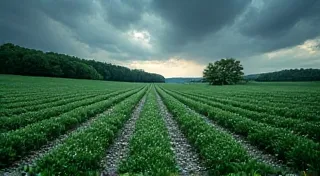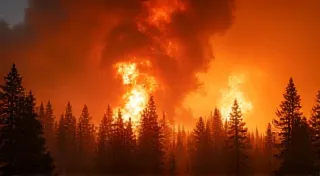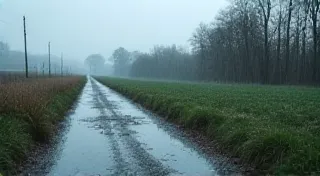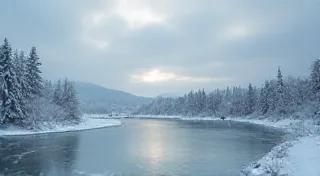Long-Term Trends in Precipitation: Historical Rainfall and Snowfall Patterns
Understanding how precipitation – rainfall and snowfall – has changed over time is crucial for understanding climate variability and the potential impacts of climate change. Examining historical weather patterns offers a valuable window into these changes, allowing us to discern long-term trends and identify anomalies that might be missed in shorter observation periods. This article will delve into the analysis of long-term precipitation records, focusing on identifying trends and highlighting significant changes in rainfall and snowfall patterns across different regions. The interplay between weather events and long-term climate trends can be complex, and understanding the historical context is key to interpreting what we observe today. Factors beyond just temperature changes, such as shifts in atmospheric circulation, solar activity, and even volcanic eruptions, can also influence regional precipitation patterns.
The Importance of Historical Data
Modern weather observations are relatively recent. Reliable, widespread meteorological recording only began in earnest in the 19th century, though earlier scattered records exist. The deeper we can delve into historical records – using data from rain gauges, snow surveys, and even historical accounts – the clearer the picture of long-term climate changes becomes. These records provide a baseline against which to compare current conditions and assess the magnitude of recent shifts. Analyzing these trends is often complicated by the impact of natural climate variability, and it's important to consider how events like volcanic eruptions can temporarily alter precipitation patterns; for example, the effects of volcanic eruptions on regional climates have been documented throughout history. The sheer scale of some past events, like the Great Blizzard of 1888, highlight the powerful forces at play and underscore the necessity of studying these historical records to fully grasp modern-day challenges.
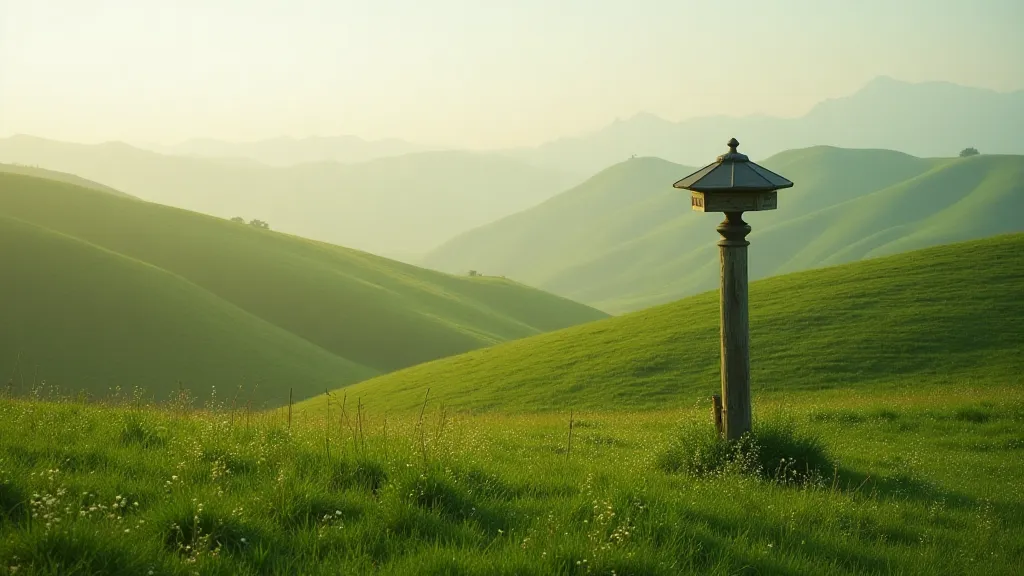
Analyzing Rainfall Trends
Analyzing rainfall trends often involves looking at annual precipitation totals, seasonal patterns, and the frequency of extreme rainfall events. Some regions have experienced consistent increases in average annual rainfall over the past century, while others have seen declines. Changes in the intensity and duration of rainfall events – leading to more frequent and severe floods – are also frequently observed. Understanding the underlying drivers of these changes, such as shifts in atmospheric circulation patterns, is a significant challenge. Regional variations are key; what’s happening in one area might be completely different elsewhere. The connection between large-scale climate phenomena and specific rainfall patterns is a complex area of study; for instance, the impact of El Niño on historical weather patterns is something that scientists continue to investigate. Beyond simply observing changes, it’s crucial to understand how land-use changes and deforestation might exacerbate or mitigate these trends. Regions experiencing drought conditions often see increased vulnerability linked to altered precipitation patterns, highlighting the interconnectedness of environmental factors. For example, deforestation in the Amazon basin has been linked to changes in rainfall patterns across South America, demonstrating the far-reaching consequences of local environmental modifications. Analyzing these interactions requires a comprehensive approach, combining statistical analysis of precipitation data with ecological and land-use information.
For example, historical data from the American Southwest may reveal a decreasing trend in precipitation over the past few decades, contributing to drought conditions. Conversely, regions in Southeast Asia might show increased rainfall intensity and frequency, potentially linked to changes in monsoon patterns. The role of forests and land use practices also influences rainfall patterns, and deforestation can often exacerbate drought conditions in vulnerable areas.
Examining Snowfall Patterns
Snowfall patterns are increasingly sensitive to temperature changes. As global temperatures rise, snow often transitions to rain, and the overall duration of the snow season decreases. Examining historical snowfall data requires careful consideration of temperature records as well, because simple snowfall totals don't always tell the whole story. A seemingly constant snowfall total might actually represent a shift from heavier, less frequent snowfalls to lighter, more frequent ones. It's also crucial to consider the impact of changing atmospheric conditions, like altered jet streams, which can affect snow distribution. The Alps, for instance, are witnessing a concerning decline in reliable snow cover, impacting water resources and tourism. Historical data shows a clear shortening of the snow season and a reduction in the overall snowpack depth. Similar trends are being observed in mountainous regions across the globe, impacting water availability and ecosystems. These changes are not isolated events; they're part of a broader trend of altered precipitation regimes across the planet. The consequences extend beyond tourism; reduced snowpack impacts river flows, affecting hydropower generation and water supplies for agriculture and human consumption. Furthermore, the change from a predominantly snowy landscape to one with more frequent rainfall can significantly alter alpine ecosystems, impacting plant and animal life. Studying these complex interactions necessitates a multidisciplinary approach, integrating climate data with ecological observations and hydrological models.

Identifying Anomalies and Extreme Events
Beyond long-term trends, identifying anomalies – periods significantly different from the historical average – is crucial for understanding climate variability. This includes examining droughts, floods, and unusually intense snowfall events. Comparing the frequency and severity of these events against historical records allows us to assess whether they are becoming more or less common. The extreme snowfall event known as the Great Blizzard of 1888 serves as a stark reminder of the power of severe winter weather and the importance of historical records in understanding these events. Newspaper accounts from the period offer a vivid depiction of the disruption caused by the storm, further illustrating the value of incorporating qualitative data into climate investigations.
Historical accounts, often overlooked, can offer valuable context. Newspaper articles and local records can sometimes provide detailed descriptions of extreme weather events that predate systematic meteorological observations. Combining these qualitative descriptions with quantitative data strengthens our understanding of past climate variability. Furthermore, examining the prevalence of wildfires in historical records can offer valuable insights into the interplay between precipitation patterns, vegetation, and climate; historical wildfires and their climate connections demonstrate the far-reaching consequences of altered precipitation regimes. The increased frequency and intensity of wildfires in recent decades are undeniably linked to changes in precipitation patterns and rising temperatures, creating a feedback loop that exacerbates the problem.
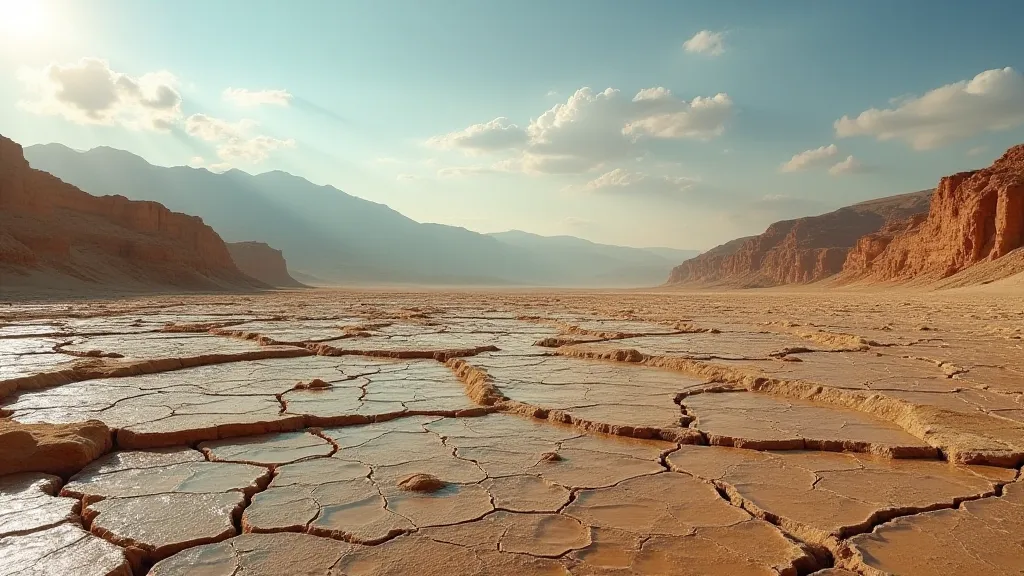
The Role of Historical Weather Patterns in Climate Change Research
Analyzing historical weather patterns is integral to climate change research. By establishing baselines and identifying trends, scientists can better understand the magnitude and rate of change occurring in our climate system. This knowledge is crucial for developing accurate climate models, predicting future weather patterns, and informing adaptation strategies. Understanding how changes in precipitation affect ecosystems and human societies is a critical component of climate change mitigation and adaptation efforts. More sophisticated climate models are increasingly incorporating historical data to improve their accuracy and predictive capabilities. It's not simply about knowing *if* things are changing, but understanding *how* and *why* change is occurring, and historical records provide the framework for these investigations. The ability to accurately model past climate events provides confidence in the models’ ability to project future scenarios. Moreover, understanding the role of natural climate variability allows scientists to distinguish between long-term trends driven by human activities and short-term fluctuations caused by natural factors. Disentangling these influences is essential for developing targeted mitigation and adaptation strategies.
The analysis of past precipitation data also contributes to a better understanding of feedback loops within the climate system. For example, decreasing snowfall can lead to reduced albedo (reflectivity), which, in turn, can further accelerate warming. These complex interactions highlight the importance of a holistic approach to climate change research, one that integrates historical data, climate modeling, and a deep understanding of Earth’s processes. The reduced albedo effect is particularly pronounced in Arctic regions, where melting sea ice and snow cover are exposing darker surfaces that absorb more solar radiation, further accelerating warming.
Challenges in Reconstructing Historical Precipitation
Reconstructing historical precipitation patterns is not without its challenges. Early rain gauges were often sparsely distributed, and data quality can be variable. Historical accounts can be subjective and difficult to quantify. Furthermore, changes in agricultural practices and land use can influence local precipitation patterns, making it difficult to isolate the effects of natural climate variability. Scientists employ a variety of techniques, including tree ring analysis, ice core data, and proxy data, to overcome these challenges and reconstruct past precipitation patterns. Tree rings, for example, provide a record of annual precipitation, as the width of the rings is influenced by moisture availability. Ice cores contain trapped air bubbles and dust particles that provide information about past atmospheric conditions, including precipitation levels. Proxy data sources provide valuable insights into climate conditions when direct meteorological measurements are unavailable. Combining data from multiple sources helps to improve the accuracy and reliability of reconstructed precipitation records. Furthermore, statistical methods are employed to account for uncertainties and biases in the data.
Conclusion
The study of historical weather patterns offers a rich source of information about past climate variability and provides a vital context for understanding current climate change. By carefully analyzing precipitation data and combining it with other historical records, we can gain valuable insights into the long-term trends shaping our planet's climate. The ongoing research into historical precipitation records emphasizes the importance of preserving and analyzing these data for generations to come. Continued investment in climate research and data collection is essential for improving our understanding of climate change and developing effective strategies to adapt to its impacts. The insights gained from historical data are not merely academic exercises; they are crucial for informed decision-making, enabling us to build more resilient communities and protect our planet for future generations. The task is daunting but the rewards—a deeper understanding of our climate and the ability to navigate its changes—are immeasurable.
